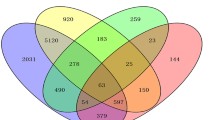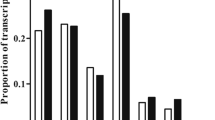Abstract
SUN5 (Sad1 and UNC84 domain-containing protein 5) is indeed a necessary structural protein located at the head-to-tail junction of sperm. It is primarily localized to the manchette, a microtubule-based structure in elongating spermatids that is involved in shaping and remodeling the sperm head during spermiogenesis. This study aims to analyze the expression pattern, sequence characteristics, and potential biological function of the SUN5 gene in Banna mi-pig inbred line (BMI). Adult BMI boar testes were analyzed using RNA-seq, and the complete coding sequence of SUN5 was obtained by RT-PCR; the sequence, structural characteristics, interacting proteins, as well as its KEGG and GO annotations were analyzed; the ceRNA regulatory network of SUN5 was constructed using RNA-seq data. RNA-seq of SUN5 analysis revealed an average expression level of 2003 and a TPM value of 49.8. Full-length CDS of SUN5 was 1152 bp long, encoding 383 amino acids. Compared to the swine (Sscrofa11.1) genome sequence, the SUN5 gene in BMI had an insertion of three bases GAA at 469–471 bp in the CDS region, which corresponded to glutamic acid. The amino acid sequence alignment analysis of multiple species revealed that the similarity between BMI and other species was greater than 78%, the results of the species phylogenetic tree analysis met the clustering criteria, indicating that the evolutionary relationships among the species were accurately represented. Additional analyses, such as PPI networks, KEGG, and GO, revealed that BMI SUN5 interacts with 32 proteins that are involved in a variety of functions, including vascular smooth muscle contraction, ribosome biogenesis, and more. The functional annotation indicated that SUN5 was involved in 8 GOs, comprising five cellular components, one molecular function, and two biological processes. 9 miRNAs were found to regulate the SUN5 gene through a targeted mode. This study aimed to investigate the expression and regulatory network of SUN5 in the testis of BMI, including its molecular structure characteristics. These findings provide a foundation for further research into the function of SUN5 in the spermatogenesis process of BMI, particularly its crucial role in the connection between sperm head and tail.






Similar content being viewed by others
REFERENCES
Hao, S.L., Ni, F.D., and Yang, W.X., The dynamics and regulation of chromatin remodeling during spermiogenesis, Gene, 2019, vol. 706, pp. 201—210. https://doi.org/10.1016/j.gene.2019.05.027
Galletta, B.J., Ortega, J.M., Smith, S.L., et al., Sperm head-tail linkage requires restriction of pericentriolar material to the proximal centriole end, Dev. Cell, 2020, vol. 53, pp. 86—101. https://doi.org/10.1016/j.devcel.2020.02.006
Zhang, Y., Yang, L., Huang, L., et al., SUN5 interacting with nesprin3 plays an essential role in sperm head-to-tail linkage: research on sun5 gene knockout mice, Front. Cell Dev. Biol., 2021, vol. 9, p. 684826. https://doi.org/10.3389/fcell.2021.684826
Sha, Y.W., Xu, X., Ji, Z.Y., et al., Genetic contribution of SUN5 mutations to acephalic spermatozoa in Fujian China, Gene, 2018, vol. 647, pp. 221—225. https://doi.org/10.1016/j.gene.2018.01.035
Chemes, H.E., Puigdomenech, E.T., Carizza, C., et al., Acephalic spermatozoa and abnormal development of the head-neck attachment: a human syndrome of genetic origin, Hum. Reprod., 1999, vol. 14, pp. 1811—1818. https://doi.org/10.1093/humrep/14.7.1811
Elkhatib, R.A., Paci, M., Longepied, G., et al., Homozygous deletion of SUN5 in three men with decapitated spermatozoa, Hum. Mol. Genet., 2017, vol. 26, pp. 3167—3171. https://doi.org/10.1093/hmg/ddx200
Malone, C.J., Fixsen, W.D., Horvitz, H.R., et al., UNC-84 localizes to the nuclear envelope and is required for nuclear migration and anchoring during C. elegans development, Development, 1999, vol. 126, pp. 3171—3181. https://doi.org/10.1242/dev.126.14.3171
Crisp, M., Liu, Q., Roux, K., et al., Coupling of the nucleus and cytoplasm: role of the LINC complex, J. Cell. Biol., 2006, vol. 172, pp. 41—53. https://doi.org/10.1083/jcb.200509124
Shao, X., Tarnasky, H.A., Lee, J.P., et al., Spag4, a novel sperm protein, binds outer dense-fiber protein Odf1 and localizes to microtubules of manchette and axoneme, Dev. Biol., 1999, vol. 211, pp. 109—123. https://doi.org/10.1006/dbio.1999.9297
Cain, N.E., Jahed, Z., Schoenhofen, A., et al., Conserved SUN-KASH interfaces mediate LINC complex-dependent nuclear movement and positioning, Curr. Biol., 2018, vol. 28, pp. 3086—3097. https://doi.org/10.1016/j.cub.2018.08.001
Göb, E., Schmitt, J., Benavente, R., et al., Mammalian sperm head formation involves different polarization of two novel LINC complexes, PLoS One, 2010, vol. 5, p. e12072. https://doi.org/10.1371/journal.pone.0012072
Frohnert, C., Schweizer, S., and Hoyer-Fender, S., SPAG4L/SPAG4L-2 are testis-specific SUN domain proteins restricted to the apical nuclear envelope of round spermatids facing the acrosome, Mol. Hum. Reprod., 2011, vol. 17, pp. 207—218. https://doi.org/10.1093/molehr/gaq099
Chen, S., Zhou, Y., Chen, Y., et al., Fastp: an ultra-fast all-in-one FASTQ preprocessor, Bioinformatics, 2018, vol. 34, pp. i884—i890. https://doi.org/10.1093/bioinformatics/bty560
Langmead, B. and Salzberg, S.L., Fast gapped-read alignment with Bowtie 2, Nat. Methods, 2012, vol. 9, pp. 357—359. https://doi.org/10.1038/nmeth.1923
Weeks, NT., and Luecke, G.R., Optimization of SAMtools sorting using OpenMP tasks, Cluster Comput., 2017, vol. 20, pp. 1869—1880. https://doi.org/10.1007/s10586-017-0874-8
Dobin, A., Davis, C.A., Schlesinger, F., et al., STAR: ultrafast universal RNA-seq aligner, Bioinformatics, 2013, vol. 29, pp. 15—21. https://doi.org/10.1093/bioinformatics/bts635
Liao, Y., Smyth, G.K., and Shi, W., FeatureCounts: an efficient general purpose program for assigning sequence reads to genomic features, Bioinformatics, 2014, vol. 30, pp. 923—930. https://doi.org/10.1093/bioinformatics/btt656
Patro, R., Duggal, G., Love, M.I., et al., Salmon provides fast and bias-aware quantification of transcript expression, Nat. Methods, 2017, vol. 14, pp. 417—419. https://doi.org/10.1038/nmeth.4197
Shang, Y., Yan, J., Tang, W., et al., Mechanistic insights into acephalic spermatozoa syndrome-associated mutations in the human SUN5 gene, J. Biol. Chem., 2018, vol. 293, pp. 2395—2407. https://doi.org/10.1074/jbc.RA117.000861
Zhu, F., Wang, F., Yang, X., et al., Biallelic SUN5 mutations cause autosomal-recessive acephalic spermatozoa syndrome, Am. J. Hum. Genet., 2016, vol. 99, pp. 942—949. https://doi.org/10.1016/j.ajhg.2016.08.004
Zhu, F., Liu, C., Wang, F., et al., Mutations in PMFBP1 cause acephalic spermatozoa syndrome, Am. J. Hum. Genet., 2018, vol. 103, pp. 188—199. https://doi.org/10.1016/j.ajhg.2018.06.010
Fridkin, A., Penkner, A., Jantsch, V., et al., SUN-domain and KASH-domain proteins during development, meiosis and disease, Cell Mol. Life Sci., 2009, vol. 66, pp. 1518—1533. https://doi.org/10.1007/s00018-008-8713-y
Wang, Q., Du, X., Cai, Z., et al., Characterization of the structures involved in localization of the SUN proteins to the nuclear envelope and the centrosome, DNA Cell Biol., 2006, vol. 25, pp. 554—562. https://doi.org/10.1089/dna.2006.25.554
Starr, D.A. and Han, M., Role of ANC-1 in tethering nuclei to the actin cytoskeleton, Science, 2002, vol. 298, pp. 406—409. https://doi.org/10.1126/science.1075119
Stewart-Hutchinson, P.J., Hale, C.M., Wirtz, D., et al., Structural requirements for the assembly of LINC complexes and their function in cellular mechanical stiffness, Exp. Cell Res., 2008, vol. 314, pp. 1892—1905. https://doi.org/10.1016/j.yexcr.2008.02.022
Tapley, E.C. and Starr, D.A., Connecting the nucleus to the cytoskeleton by SUN-KASH bridges across the nuclear envelope, Curr. Opin. Cell Biol., 2013, vol. 25, pp. 57—62. https://doi.org/10.1016/j.ceb.2012.10.014
Shang, Y., Zhu, F., Wang, L., et al., Essential role for SUN5 in anchoring sperm head to the tail, eLife, 2017, vol. 6, p. e28199. https://doi.org/10.7554/eLife.28199
Okada, T., Akada, M., Fujita, T., et al., A novel cancer testis antigen that is frequently expressed in pancreatic, lung, and endometrial cancers, Clin. Cancer Res., 2006, vol. 12, pp. 191—197. https://doi.org/10.1158/1078-0432.CCR-05-1206
Pausch, H., Venhoranta, H., Wurmser, C., et al., A frameshift mutation in ARMC3 is associated with a tail stump sperm defect in Swedish Red (Bos taurus) cattle, BMC Genet., 2016, vol. 17, p. 49. https://doi.org/10.1186/s12863-016-0356-7
Lei, Y., Zhang, X., Xu, Q., et al., Autophagic elimination of ribosomes during spermiogenesis provides energy for flagellar motility, Dev. Cell, 2021, vol. 56, pp. 2313—2328. https://doi.org/10.1016/j.devcel.2021.07.015
Sun, X.H., Zhu, Y.Y., Wang, L., et al., The Catsper channel and its roles in male fertility: a systematic review, Reprod. Biol. Endocrinol., 2017, vol. 15, p. 65. https://doi.org/10.1186/s12958-017-0281-2
Brown, S.G., Publicover, S.J., Barratt, C.L.R., et al., Human sperm ion channel (dys) function: implications for fertilization, Hum. Reprod. Update, 2019, vol. 25, pp. 758—776. https://doi.org/10.1093/humupd/dmz032
Chung, J.J., Navarro, B., Krapivinsky, G., et al., A novel gene required for male fertility and functional CATSPER channel formation in spermatozoa, Nat. Commun., 2011, vol. 2, p. 153. https://doi.org/10.1038/ncomms1153
Wilczynska, A. and Bushell, M., The complexity of miRNA-mediated repression, Cell Death Differ., 2015, vol. 22, pp. 22—33. https://doi.org/10.1038/cdd.2014.112
Fischer, J., Koch, L., Emmerling, C., et al., Inactivation of the Fto gene protects from obesity, Nature, 2009, vol. 458, pp. 894—898. https://doi.org/10.1038/nature07848
Bai, Y., Huang, J.M., Liu, G., et al., A comprehensive microRNA expression profile of the backfat tissue from castrated and intact full-sib pair male pigs, BMC Genomics, 2014, vol. 15, p. 47. https://doi.org/10.1186/1471-2164-15-47
Kim, J., Cho, I.S., Hong, J.S., et al., Identification and characterization of new microRNAs from pig, Mamm. Genome, 2008, vol. 19, pp. 570—580. https://doi.org/10.1007/s00335-008-9111-3
Zhang, W., Zhong, L., Wang, J., et al., Distinct microRNA expression signatures of porcine induced pluripotent stem cells under mouse and human esc culture conditions, PLoS One, 2016, vol. 11, p. e0158655. https://doi.org/10.1371/journal.pone.0158655
Foekens, J.A., Sieuwerts, A.M., Smid, M., et al., Four miRNAs associated with aggressiveness of lymph node-negative, estrogen receptor-positive human breast cancer, Proc. Natl. Acad. Sci. U.S.A., 2008, vol. 105, pp. 13021—13026. https://doi.org/10.1073/pnas.0803304105
Crosby, M.E., Kulshreshtha, R., Ivan, M., et al., MicroRNA regulation of DNA repair gene expression in hypoxic stress, Cancer Res., 2009, vol. 69, pp. 1221—1229. https://doi.org/10.1158/0008-5472.CAN-08-2516
Zhang, B., Qiangba, Y., Shang, P., et al., A comprehensive microRNA expression profile related to hypoxia adaptation in the Tibetan pig, PLoS One, 2015, vol. 10, p. e0143260. https://doi.org/10.1371/journal.pone.0143260
Zuo, J., Wu, F., Liu, Y., et al., MicroRNA transcriptome profile analysis in porcine muscle and the effect of mir-143 on the MYH7 gene and protein, PLoS One, 2015, vol. 10, p. e0124873. https://doi.org/10.1371/journal.pone.0124873
Du, X., Zhang, L., Li, X., et al., TGF-β signaling controls FSHR signaling-reduced ovarian granulosa cell apoptosis through the SMAD4/miR-143 axis, Cell. Death. Dis., 2016, vol. 7, p. e2476. https://doi.org/10.1038/cddis.2016.379
Huang, T., Huang, X., Chen, W., et al., MicroRNA responses associated with Salmonella enterica serovar typhimurium challenge in peripheral blood: effects of miR-146a and IFN-γ in regulation of fecal bacteria shedding counts in pig, BMC Vet. Res., 2019, vol. 15, р. 195. https://doi.org/10.1186/s12917-019-1951-4
Funding
This work was supported by the National Natural Science Foundationof China (no. 32060733), Scientific and Technological Innovation Programs of Higher Education Institutions in Shanxi, China (no. 2022L570), 2023 Lyuliang Development Zone’s Plan to Introduce High-Level Scientific and Technological Talents (no. 2023RC26) Doctoral Fund of Lyuliang University.
Author information
Authors and Affiliations
Contributions
X. Zhang and H.L Huo contributed equally to this work.
Corresponding author
Ethics declarations
ETHICS APPROVAL AND CONSENT TO PARTICIPATE
The animal experiments conducted in this study were approved by the Research Ethics Committee of Yunnan Agricultural University (Approval no. YNAUREC2020224) and were carried out in accordance with the guidelines for the care and use of laboratory animals established by the National Research Council (2017).
CONFLICT OF INTEREST
The authors declare that they have no conflicts of interest.
Additional information
Publisher’s Note.
Pleiades Publishing remains neutral with regard to jurisdictional claims in published maps and institutional affiliations.
Rights and permissions
About this article
Cite this article
Zhang, X., Huo, H.L., Liu, Z.P. et al. Molecular Characteristics of SUN5 in Banna Mini-Pig Inbred Line (BMI) and Its Expression Regulation in Testis. Russ J Genet 59, 1345–1357 (2023). https://doi.org/10.1134/S1022795423120153
Received:
Revised:
Accepted:
Published:
Issue Date:
DOI: https://doi.org/10.1134/S1022795423120153




